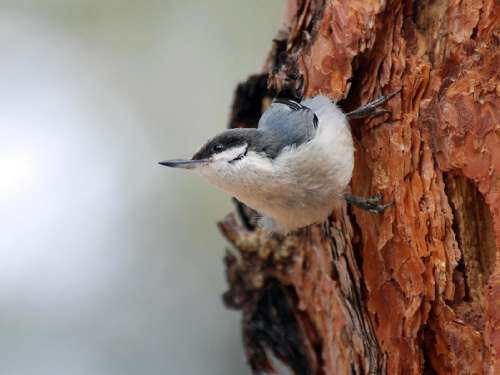
The pygmy nuthatch has a strong and almost exclusive preference for long- needled pines including ponderosa, Jeffrey, and similar species. It depends on cavities for nesting and roosting and has clear seasonal cavity preferences, related to thermal insulation and ventilation. Seventy percent of nest cavity openings face southward, others face south and east, away from prevailing winds. Selection of the roost cavity is affected by weather and by characteristics of the cavity (such as type of wood, thickness of bole, size of entrance, and depth of cavity) that afford protection from outside ambient temperatures. Temperature and presence of snow influence both time of roosting and size of roost flock. Flocks roost earlier as temperatures drop and flock size increases when snow covers ground. While roosting they use protected sites, huddling, and hypothermia for energy-saving mechanisms. The pygmy nuthatch feeds almost exclusively in pines and eats weevils, leaf and bark beetles, and pine seeds. Energy assimilated increases with rising ambient temp and barometric pressure, and decreases with higher wind speeds and precipitation. Temperature and wind speed have greatest effect – individuals are less active on colder and windier days, when they are more apt to roost in the shelter of a branch or in a cavity. Image credit: National Park Service
